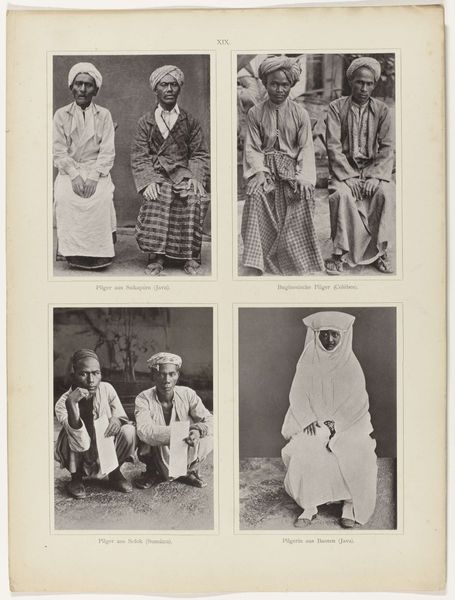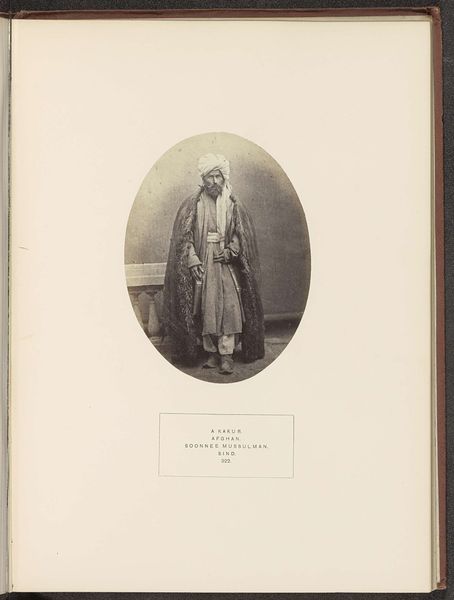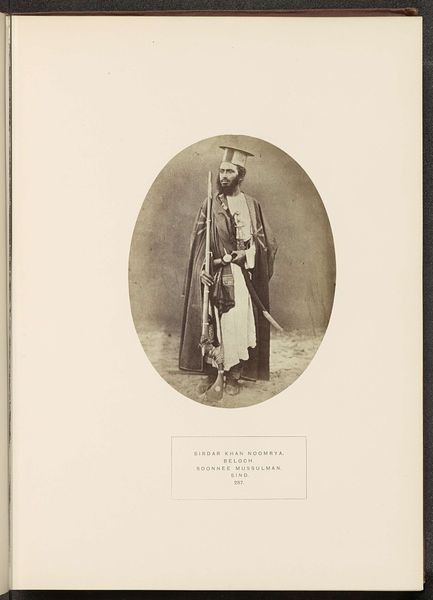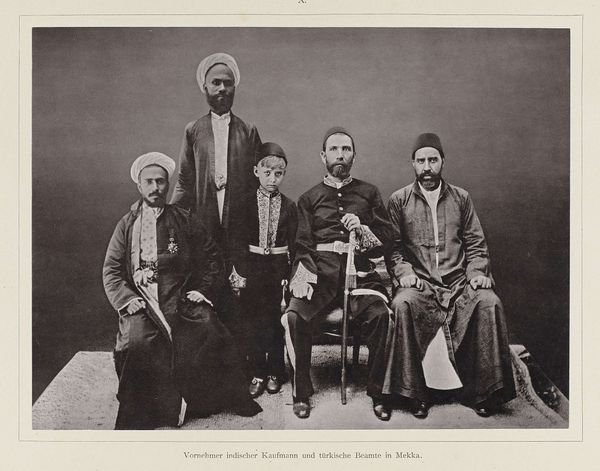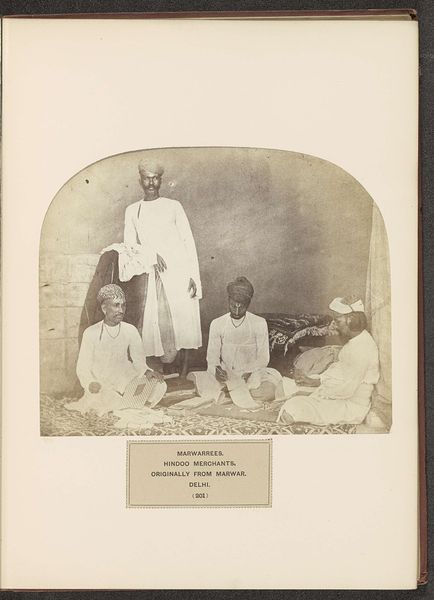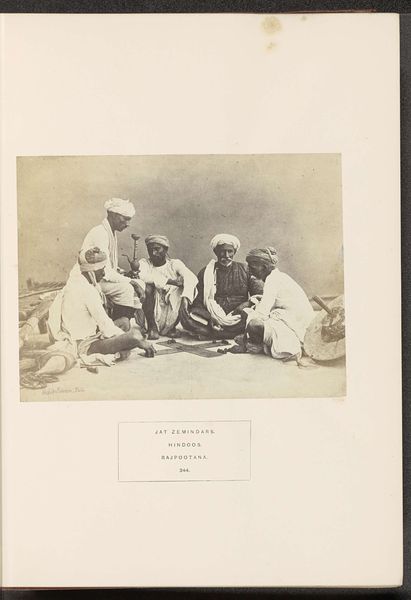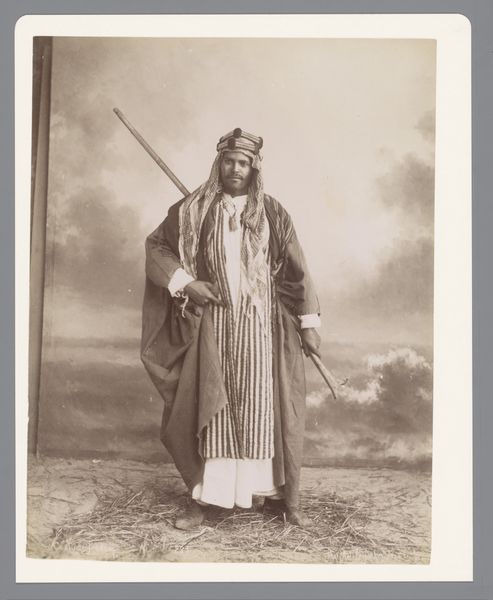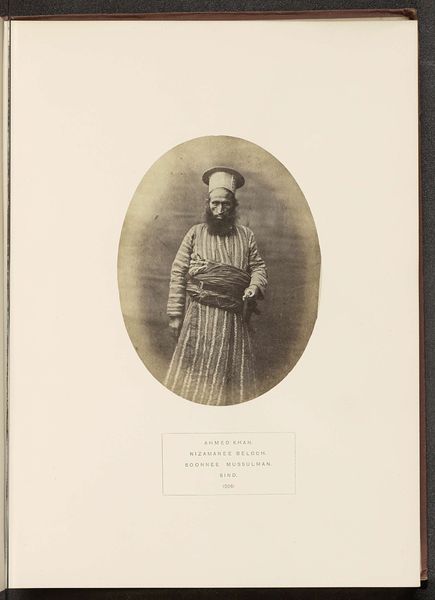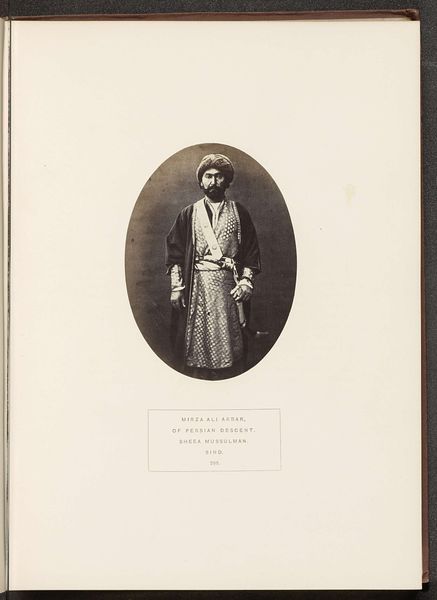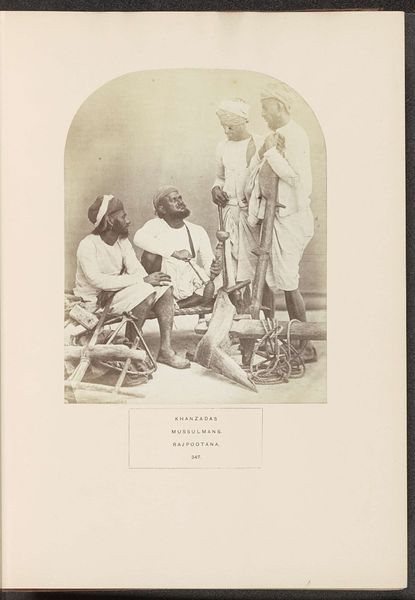
Vier portretten, waaronder die van Abd al-Ghaffar en diens zoon, twee kinderen van de Banī Shaybah stam en een sayyid before 1888
0:00
0:00
#
light pencil work
#
photo restoration
#
light coloured
#
white palette
#
archive photography
#
historical photography
#
desaturated colour
#
desaturated image
#
photo layout
#
graphite
Dimensions: height 130 mm, width 95 mm
Copyright: Rijks Museum: Open Domain
Editor: This photographic print from before 1888 presents four portraits attributed to Christiaan Snouck Hurgronje, showcasing Abd al-Ghaffar, his son, children from the Banī Shaybah tribe, and a sayyid. The composition strikes me with its stark arrangement – a grid of faces, each holding a quiet dignity. How would you interpret this arrangement and the visual elements presented? Curator: Indeed. Considering a formalist perspective, one must observe how the photographer utilises the structure to construct meaning. Notice the recurring motif of seated figures juxtaposed with standing children; this visual rhythm establishes a comparative dynamic. The limited tonal range, from light pencil work to desaturated colours, draws attention to texture and form, enhancing the overall composition through subtle nuances. Have you also considered the semiotic implications of their attire? Editor: Not initially, but I see how their clothing – the turbans, robes – convey status and identity. Do you think the composition directs our eye in a certain way? Curator: Precisely. The photographer uses the frame to draw attention, and the eye traces each face, examining the meticulous arrangement and symmetry of form. Note how the limited light exposure directs viewers towards specific compositional elements: the folds of their garments, the umbrellas… what might these details signify formally? Editor: Perhaps, they provide contrast and visual anchors amidst the muted palette, contributing depth? It’s interesting to observe these purely aesthetic relationships. I initially looked for cultural narratives, but now I better appreciate how the artist used form to construct the image itself. Curator: Indeed, recognizing these fundamental forms enhances one’s appreciation of this arrangement as an intentional aesthetic object.
Comments
No comments
Be the first to comment and join the conversation on the ultimate creative platform.
